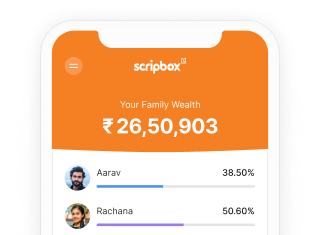Investing 2 lakhs in a fixed deposit can yield substantial monthly returns. This opportunity offers a stable income stream and financial security. However, it’s important to note that the interest rates on FDs can vary over time. Therefore, checking for the current interest rates before making any investment decisions is recommended.
Monthly Interest for 2 Lakhs in FD 2025
The following table lists 2 lakhs FD interest per month for different banks over a tenor of 5 years for general public:
| Bank Name | Interest Rates | Monthly Interest for 2 Lakh |
| State Bank of India | 7.00% | Rs. 1,167 |
| Central Bank of India | 7.00% | Rs. 1,167 |
| ICICI | 7.25% | Rs. 1,208 |
| Axis Bank | 7.25% | Rs. 1,208 |
| Punjab National Bank | 7.25% | Rs. 1,208 |
| Indian Overseas Bank | 7.30% | Rs. 1,217 |
| Bank of India | 7.30% | Rs. 1,217 |
| HDFC | 7.35% | Rs. 1,225 |
| Bank of Maharashtra | 7.35% | Rs. 1,225 |
| Bank of Baroda | 7.45% | Rs. 1,242 |
| City Union Bank | 7.50% | Rs. 1,250 |
| Post Office | 7.50% | Rs. 1,250 |
| LIC | 7.75% | Rs. 1,292 |
| AU Small Finance Bank | 8.00% | Rs. 1,333 |
| RBL Bank | 8.00% | Rs. 1,333 |
| Shriram Finance | 8.47% | Rs. 1,412 |
| Fincare Small Finance | 8.61% | Rs. 1,435 |
What is the TDS on ₹2 Lakh FD interest income?
When depositing your savings in a fixed deposit, it’s important to note that the interest earned on FDs is subject to taxation. Banks deduct TDS on interest earned. TDS is deducted on interest income above INR 40,000 per annum for regular citizens and above INR 50,000 for senior citizens. The TDS rate is at 10%.
What are the documents required for a ₹2 Lakh fixed deposit?
The following are the documents required to open a ₹2 lakh fixed deposit in India:
Identity Proof: Aadhar Card, Photo Ration Card, Driving Licence, Passport, Voter ID card, etc.
Address Proof: Passport, Utility bills, bank statement with cheque, etc.
Signature Proof: PAN Card, Passport, driving licence, etc.
Moreover, senior citizens intending to invest in a ₹2 Lakh fixed deposit must submit additional documents, including proof of age and Form 15H.
What is the eligibility criteria for a ₹2 Lakh fixed deposit?
Indian citizens above 18 years, minors (with a guardian), HUFs, and NRIs can open a ₹2 Lakhs fixed deposit.
Frequently Asked Questions
Yes, most financial institutions offer special interest rates for senior citizens. Usually, higher rates (0.25% to 0.50%) than regular citizens.
The interest income from FD is taxable as per the investor’s income tax slab rate. The interest is added to the total taxable income and is taxed at the applicable rate.
According to Section 194A of the Income Tax Act, a 10% TDS (Tax Deducted at Source) is applicable on annual interest income exceeding ₹40,000. In the case of a ₹2 Lakhs fixed deposit, the annual interest does not surpass this threshold. Therefore, no TDS will be charged.
The interest rate of a fixed deposit remains consistent throughout its tenor until maturity. This means that once you lock in a fixed deposit, the interest rate remains unchanged until the deposit reaches its maturity date, ensuring stability and predictability in your earnings.
There are primarily two modes of receiving interest on a fixed deposit. The first is the cumulative option, where the interest is compounded on a quarterly basis and paid upon maturity or automatically renewed. The second is the non-cumulative option, where the interest is disbursed in the form of monthly, quarterly, or maturity payments, providing regular income throughout the tenor.














Show comments